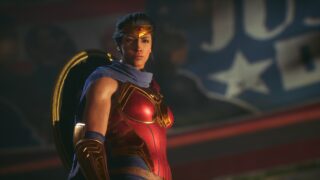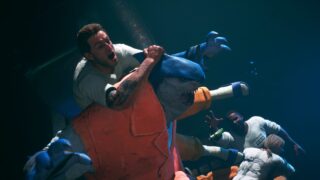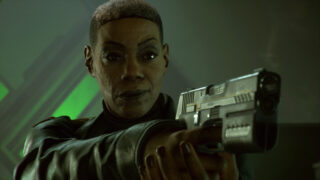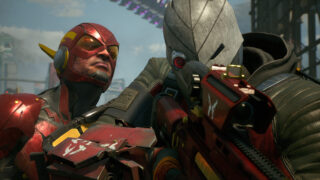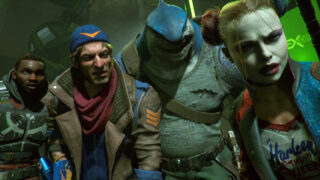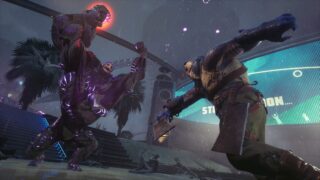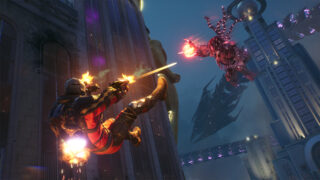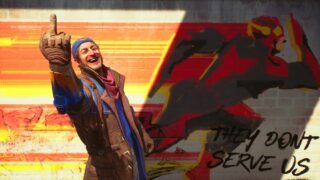A few hours with Rocksteady’s Suicide Squad isn’t enough to convince
Rocksteady’s co-op looter shooter is a long departure from its Arkham trilogy in more ways than one

Suicide Squad: Kill the Justice League is, as I’m told by a Rocksteady representative, part of the Arkhamverse. But you wouldn’t know just by looking at it, and after playing it for almost four hours, I’m not sure you would know it was from the same studio behind the best superhero game trilogy ever made.
Coming almost a decade after the release of Arkham Knight, it’s perhaps no surprise that the London-based developer would be up for a change and even a subversive direction. After all, you’re no longer playing a superhero but rather a rogue’s quartet of supervillains and antiheroes, Captain Boomerang, Deadshot, King Shark, and Harley Quinn.
Only there’s an even greater supervillain in the form of the extraterrestrial Braniac, who’s turned the city of Metropolis into an apocalyptic warzone, transforming its citizens into ‘enhanced’ alien slaves, and even brainwashing the Justice League’s finest to carry out his bidding.
Compared to the Dark Knight’s last outing in Gotham, the stakes are considerably higher then, though you’re also playing as unwilling recruits who would sooner save their own skins before saving the world. It’s fun watching and listening to these four mismatched antiheroes of Taskforce X bicker and throw colourful insults at each other while pushing the patience of their stern commanding officer Amanda Waller.
But while there’s a compelling narrative hook, with likeable performances, including Tara Strong who reprises Harley’s voice, taking control of these antiheroes leads to other questions, namely just who is this game for?
One of the biggest strengths of the Arkham games was that they really made players feel like they were Batman, whether in traversal, exploration or combat. While each of the four Suicide Squad members have their own unique movesets and weapon types, they don’t feel as intuitive to control.
Indeed, many of their abilities are riffed from someone else, as the opening chapter has the group pilfering gadgets from a display in the Hall of Justice, which also becomes your base now that its original tenants have turned to the dark side. So Harley takes off with Batman’s grapple gun and bat drone that combined allows her to swing around the city anywhere, Deadshot acquires Gizmo’s jetpack, while Captain Boomerang takes a gauntlet created by Dr. Sivana that has him blinking at Flash-like speeds.
This set-up conveniently gives each member a different traversal ability, while King Shark is the only member who can naturally leap at great distances, while also creating a shockwave splash upon landing. Traversal skills have cooldowns, but there are also other manoeuvres you can pull off to take their use further.
For instance, Harley’s bat drone has a short cooldown followed by a much longer one to prevent you from swinging freely in the air, but she can also double-jump, while when grappling onto a building, timing the jump button at the last moment lets her overshoot to cover more air, kind of like a slightly underwhelming version of Spider-Man’s Point Launch. But if your specific movesets are in cooldown then every character can still jump and then slide along the ground or run up buildings, again kind of cool and convenient in motion, just maybe not what you’d associate the character with.
That same identity mish-mash is extended to third person shooter combat, which might be a natural fit for a marksman like Deadshot, but less so for the others. Regardless, each is given their own specific weapon types, of which two ranged weapons and one melee weapon can be equipped on their loadout. In other words, don’t expect Arkham-style gameplay, but instead your squad are primarily blasting away Brainiac’s purple yet nondescript alien army, although there are still cinematic finishing takedowns that can be charged up and then activated by pressing two buttons simultaneously.
In Destiny fashion, you can also unlock lots of gear, colour-coded by their rarity, with Rocksteady complicating matters with a new Notorious tier above the rarity rank of Legendary. Presumably, my hands-on was tailored so that we would be able to sample the high-level goods earlier, because if the newest tier can be unlocked through just beating an early story boss mission, it would surely be missing the point.
“While each of the four Suicide Squad members have their own unique movesets and weapon types, they don’t feel as intuitive to control. Indeed, many of their abilities are riffed from someone else”
The gunplay is by no means bad, though it also has a lot you need to be able to read in the moment. While most shooters have trained you for headshots, you’re encouraged to aim for your foes’ legs which will put them in a stunned state that lets you finish them with a melee that also harvests their shields, an important tactic as keeping your shield topped up is essential when your health starts off quite low.
Some enemy attacks, meanwhile, can be countered by aiming and then tapping the right bumper, but these tactics become trickier when other players are involved, as you might have been planning to shield harvest only for your targets to be blown away by someone else.
While my Suicide Squad multiplayer hands-on was with a Rocksteady staff member and two others in the same room, coordination felt messy. During one mission objective where we’re helping a now diminutive version of Poison Ivy by protecting her plants from Brainiac’s troopers, I found myself rushing from rooftop to rooftop, struggling to spot the next enemy spawn, only to find most of them have been mopped up by someone else by the time I got there.
A bigger issue was that the verticality of the open world meant I frequently lost sight of where my other squad members were, one moment chasing after their marker on the rooftop only to find that it had flipped around because it transpired they were on ground level.
Although the above issues could be improved with straightforward UI adjustments, such as a compass HUD or transparent coloured-coded silhouettes, I’m still concerned over its fundamental gameplay, which boils down to going to this point, shooting a lot of nondescript purple aliens, then going to another point to shoot more purple guys, and that’s still even the case for one of the boss encounters that wasn’t a member of the Justice League.
Concluding the session, our team had the chance to take on The Flash, which also involved some tedious build-up, and while I won’t spoil the details, it makes you appreciate why bosses in team-based shooters are typically larger than life and why these encounters occur in enclosed arenas rather than the open world.
There’s no getting around that for Arkham fans, Suicide Squad is an entirely other beast, as stark a difference as it is being able to see the city in daylight. But being different from before doesn’t mean that it’s necessarily new, especially when it seems to be taking older ideas from both the open world action of Crackdown and a loot-based approach to gear like Marvel’s Avengers.
Yet, as flawed as Crystal Dynamics’ title was, it did at least deliver on the fantasy of playing as your favourite superheroes. After breaking new ground for the superhero genre (just consider how Arkhamesque Spider-Man’s combat is), it’s sad to think that a decade later, Rocksteady is merely following others.
